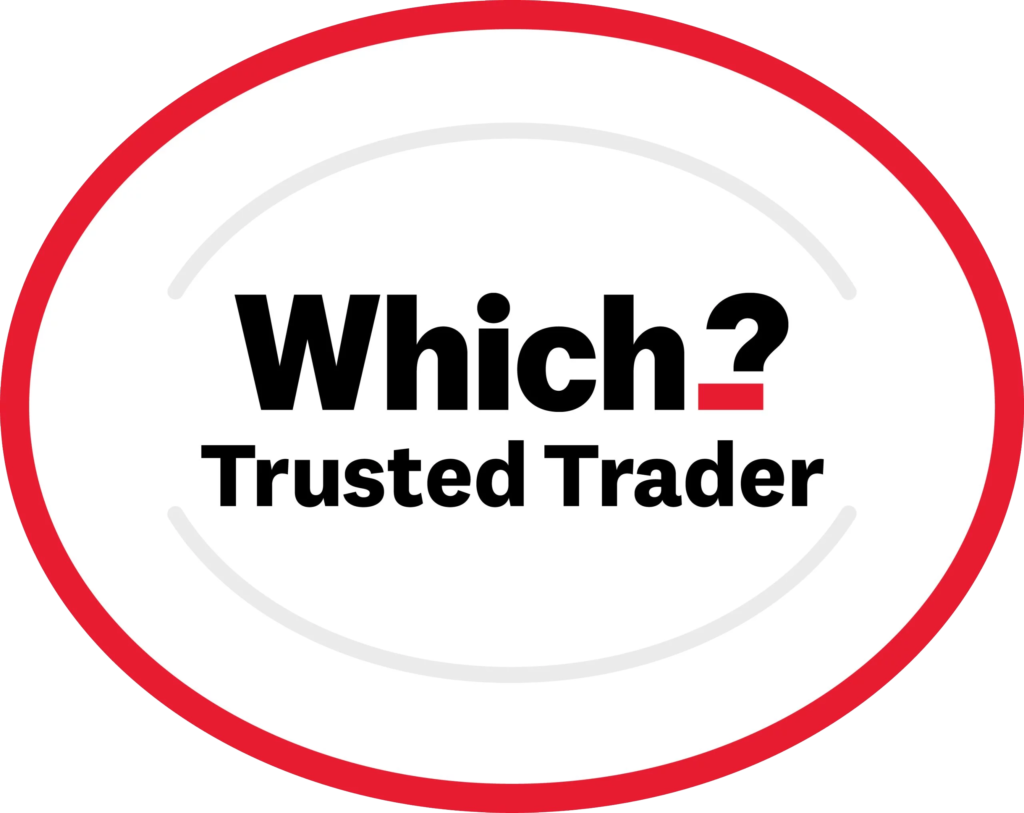FAQ
Common questions we are asked, answered.
Frequently asked questions
We’re sure you’ve done your research, but no one has all of the answers. Going solar is a big decision, so it’s good to have as much information as you can, to help you make an informed choice.
Hopefully this page will clear up any questions you might have. If there’s anything we’ve missed, please do get in touch by emailing [email protected] and then we can feature your question here.

How long do solar panels last?
The life of solar panels vary depending on the brand but generally solar panels are expected to last for 25-30 years. When we talk about the ‘life’ of a solar panel, we’re talking about the age at which its generation dips below a certain percentage. A panel’s performance naturally decreases by around 0.5% each year. A panel reaches the end of its ‘lifespan’ when it begins to generate below 85-90% efficiency. So a solar panel doesn’t stop working at the end of its life, it’s simply considered inefficient. This is what panel performance warranties are based on. A performance warranty guarantees a certain percentage of efficiency for a certain number of years. You can find warranty information for the panels we use in the products section on our ‘Homeowners’ page.
As new technology hits the market, the performance warranty, or lifespan, of solar panels increases. Some of the latest solar panels are now expected to last up to 40 years and this number could keep increasing as technology advances. If you look after your panels and service them every few years then they can easily last beyond their expected lifespan and remain generating for years to come.
Is my roof suitable for solar?
There are only a few roof types which can pose issues for solar panel installations. The first is asbestos, for obvious reasons. If you have an asbestos roof then don’t worry, we can still install solar panels on it. However, it would be your responsibility to dispose of any tiles. The second is delabole slate, which can be a little more tricky. Delabloe slate can be installed on, but it cannot be MCS certified as solar limpets must be used.
Other than those mentioned above, most roofs are suitable for solar. The factors that really matter are a roof’s age and condition. There are several obvious signs to look out for which can indicate issues with your roof. Sagging, or any areas of the roof which do not look structurally sound, would pose an issue. Solar panels add weight to your roof so a weak or sagging roof would be unable to support the extra pressure. Another issue might be a leaky roof. It goes without saying that if you have a leaky roof, you should have a roofer out to make any repairs before installing solar panels. Otherwise, you may have to remove all of the panels at a later date to find where the water is coming in. If you’re in a terrace or row of houses which are all of a similar age, then take note of any work being carried out on your neighbours roofs. If several surrounding houses are undergoing roof repairs, it might indicate that yours will need repairing in the near future. Finally, if you know that you have a purlin roof then just let us know and we will carry out a structural report before installing your solar panels.
Before designing your system, its best to make us aware of any issues with your roof. Equally, please share any information on work previously undertaken on the roof as this is all useful to us. If you’re unsure of your roof’s condition or want a second opinion, then we can send a member of our team out to survey and check that is up to the job.
Does my roof have to be shade-free or South-facing?
Many of us don’t have the luxury of a South-facing roof. So what does this mean for your solar panels? Luckily, other set ups can work well. If you have an East and West facing roof then the panels on the East side will catch the morning rays and the panels on the West will pick up the afternoon sun. It’s only really North-facing roofs that should be avoided as they receive no direct sunlight and would generate significantly less, making them a poor investment.
Another thing to consider is shading. This could be caused by trees, chimneys or surrounding properties. If you notice that parts of your roof are cast in shade during the day then we can add optimisers to overcome the issue.
Do I need planning permission?
In most cases, no. Solar panels on domestic properties including detached, semi-detached, terraced or outbuildings typically come under ‘permitted development’ which means they don’t require planning permission.
There are some exceptions to the rule however, including flats, listed properties and properties in conservation areas or AONB (Areas of Outstanding Natural Beauty). If you’re unsure, it’s always best to contact your local authority’s planning department to see if any restrictions apply. For example in conservation areas, you might be required to position your panels out of sight from the main road.
Do I need a battery?
**Since April 1, 2022, batteries have been subject to 0% VAT when included in a full solar system install. This government scheme ends on March 31, 2027. This has been great for those getting new solar systems installed, but not so helpful for those wanting to add a battery to an existing system. The good news is, that’s all about to change. In February 2024, all batteries (added independently or onto an existing system) will be subject to 0% VAT, making now a brilliant time to invest in one.**
Solar panels generate the most electricity when the sun is shining. As many of us are out during the day, this doesn’t always align with the times when we use the most electricity. This is where a battery comes in. A battery will store the energy generated during the day and allow you to use it in the evening once the sun has gone down.
For this reason, we would recommend installing a battery with your solar system. However, it’s completely up to you whether you opt to have a battery or not. It certainly isn’t a necessity, as you can use mains electricity in the evenings and overnight when your solar panels aren’t generating. Without a battery, any energy not used is exported back to the national grid. This leads us nicely onto the next question.
Can I make money by selling excess energy back to the grid?
Yes, you can. However, it is usually more cost-effective to install a battery and use the energy you generate rather than sell it back to the grid. This is because SEG (Smart Export Guarantee) rates are currently far lower than the price of electricity supplied by the grid. Based on rates in December 2023, the average price per kWh is 27p and the highest SEG rate (with Octopus energy) is 15p.
If you’re generating excess electricity, you can set up a SEG (Smart Export Guarantee) rate with your supplier and you will get paid a set amount per kWh exported. We recommend signing up with Octopus energy as they currently pay the highest rate, have amazing customer service and are Which? recommended.
Do solar panels work on cloudy days?
Don’t worry, your solar panels will still work during cloudy weather as they do not need direct sunlight to generate electricity. They just won’t be running at peak performance.
Sometimes, solar panels can generate with higher efficiency on cloudy days than during clear skies. This is due to the ‘edge-of-cloud’ effect where the sunlight is magnified by the cloud’s fluffy edges. There are also some wavelengths outside of the visible light spectrum which can penetrate clouds and are picked up by solar panels.
If you’d like to maximise the energy produced during sunny weather, we’d recommend installing a battery with your system. Then all of that extra energy is stored away for a cloudy day. Please read our ‘Do I need a battery?’ question to find out why they’re so beneficial.
Do solar systems require maintenance?
The great news is, solar systems require very little maintenance as they include few moving parts. And any issues which do arise will be easily spotted when checking your online account or app (if online accounts and apps really aren’t your thing, then you can take a quick look at your inverter or generation meter). Generation will naturally fluctuate due to weather conditions, but if you notice a prolonged dip in your production, then let us know. We can come and take a look straight away and get it back to generating at full efficiency. We also include a free service after five years to keep your solar system in tip-top condition.
In general, you shouldn’t need to clean your solar panels. Our glorious British weather will do a brilliant job of cleaning them for you. There are some conditions which could mean whipping out your sponge and bucket of soapy water every now and then. If you live by the sea, for example, then salt, sea spray and sand could build up on your solar panels. Equally, if you have a lot of seagulls (or any other bird for that matter), then you might get a lot of bird poo. But, as we said, in most cases they won’t require any cleaning. There isn’t much that a little wind and rain can’t handle for you. You can also trim back any trees or shrubs that might creep up over time and cast shade across your panels.
What is an inverter and where should you put it?
An inverter is a vital part of any solar system. Its job is to convert the direct current (DC) electricity, generated by solar panels, into alternating current (AC) electricity which can be used around the home. All of the inverters we install can be monitored online or through an app on your phone, meaning you can keep track of your generation night or day.
Most people opt to have their inverter installed in their loft. We get it; It’s out of the way and doesn’t take up storage space in the rest of the house. The thing is, heat rises and sometimes this can cause issues for inverters as they struggle to stay cool. It’s still perfectly fine to have your inverter in the loft, as your inverter will cut out if the temperature becomes too great. But it’s now mandatory to have a smoke alarm fitted there just in case. Safety is our first priority, after all. Because of this, we would suggest installing your inverter in a garage or outbuilding where the temperature tends to be less likely to fluctuate. The same goes for your battery (if you choose to have one).
What is a kWh? and why do we need your annual kWh usage?
You might have noticed the abbreviation ‘kWh’ used a lot and wondered what it means. A kilowatt hour (kWh) is a unit of measurement for gas and electricity. One kWh equals 1,000 watts. You can usually find your annual kWh usage on your household energy bill. It is used to measure the amount of electricity you’re using and your supplier will charge you at a rate per kWh.
Despite the way it sounds, 1 Kilowatt hour isn’t measuring the amount of kilowatts you’re using per hour. It’s actually measuring the amount of energy you would use if you ran a 1,000 watt appliance for an hour. This would vary greatly between different appliances. Here are some examples:
a kWh would power
a broadband router (7-10 watts) for five days
or a lightbulb (100-watt) for 10 hours
or a dishwasher (1,000 watts) for one hour
or an oven (2,000 watts) for half an hour
or an electric shower (10,000 watts) for 6 minutes.
We ask for your annual kWh usage to determine the amount of solar panels you would need. You might be able to generate enough power from your solar panels to cover the majority of your annual kWh usage. Alternatively, you might be covering some of your usage with the energy generated through your solar panels. If the latter is the case, we can use your annual kWh usage to find out how much you’d save on your bills and work out the return on investment for your solar panels.



